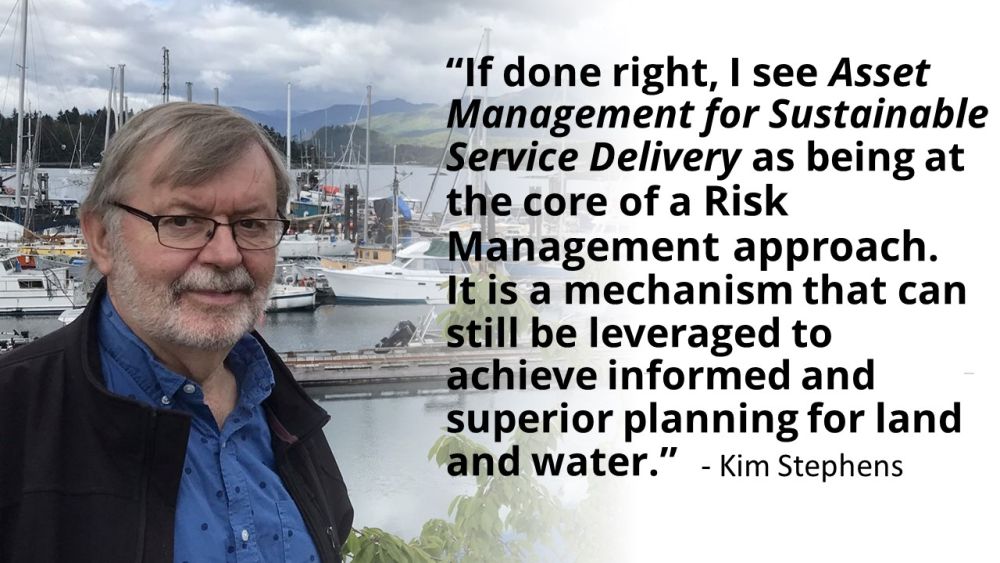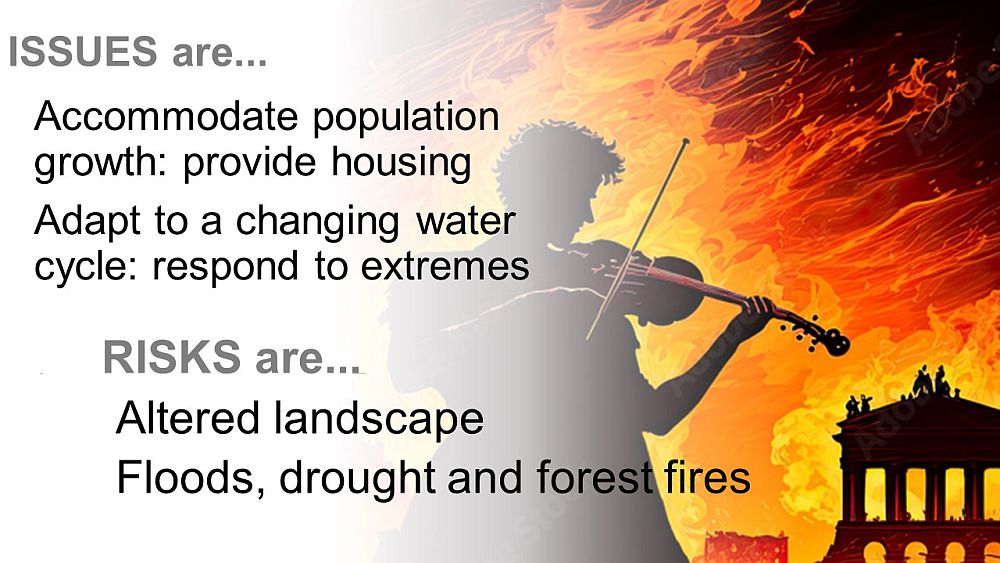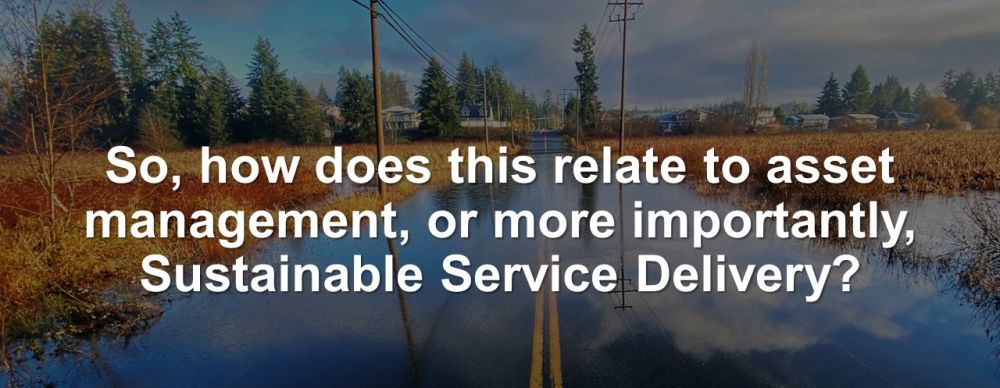LIVING WATER SMART IN BRITISH COLUMBIA: “If done right, I see Asset Management for Sustainable Service Delivery being leveraged to achieve informed and superior planning for land and water,” stated Kim Stephens, Partnership for Water Sustainability in British Columbia
Note to Reader:
Published by the Partnership for Water Sustainability in British Columbia, Waterbucket eNews celebrates the leadership of individuals and organizations who are guided by the Living Water Smart vision. The edition published on October 31, 2023 featured an article written by Kim Stephens for the Asset Management BC Newsletter. The underlying theme is about the elephant in the room: the asset management community has lost its way.

CONTEXT AND HISTORY DO MATTER: Droughts, Forest Fires, Floods and Sustainable Service Delivery
The issues are clear and so are the risks.
There is no time to re-invent the wheel, fiddle, or go down cul-de-sacs. Understand how the past informs the future and build on that experience.

Governments have had two decades to prepare for the obvious and the inevitable. 2003 was the first of a series of “teachable years”, with the full onslaught of a changing climate hitting hard as of 2015.

When Asset Management BC was birthed circa 2010 as a companion initiative to the Partnership for Water Sustainability, I remember the strategic goal articulated by Glen Brown – to foster innovation and integration using the provincial grants program as a financial incentive to influence how communities manage land and water.
A memorable Glen Brown quotable quote from September 2009 captures the WHY and the WHAT behind the vision for sustainable service delivery as a driving force for innovation and integration:

The spotlight shone brightly on the notion of levels-of-service. And this led to the vision and game plan for Asset Management for Sustainable Service Delivery which Wally Wells has successfully spearheaded for all these years.
How well are we doing?
When I reflect on the Glen Brown quote, and recall the context, I lament the missed opportunity that his quote symbolizes. Sustainable service delivery should have been the engine for integration across disciplines, departments, and sectors. But that is not how it turned out.
When Glen Brown introduced the Sustainable Service Delivery concept in 2011 at our “course on a course correction for watershed planning” in Metro Vancouver, we at the Partnership for Water Sustainability were convinced that Sustainable Service Delivery would influence HOW communities develop land, use water, and protect streams. That was our big picture.

Viewed in the big picture context, it is no surprise that the asset management community has lost its way. We are observing this across sectors. Communities and local governments are being overwhelmed by the issues of the day, losing sight of the goal, and getting lost in the details.
Now what?
The past informs the future.
If done right, I see Asset Management for Sustainable Service Delivery as being at the core of Risk Management. SSD is a mechanism that can still be leveraged to achieve informed and superior planning for land and water.
It certainly helps that risk management is language that gets the attention of elected representatives. With risk management as the lens, an integrated approach to SSD would help them focus on levels-of-service and consequences for water, land, and finances.

Interweaving Indigenous oral history and Western water science represents an opportunity for BC communities to re-set and get the big picture right when it comes to the WHY, WHAT and HOW of tackling the clear and present risks associated with a fundamentally altered landscape.
What we in the Partnership are essentially talking about is Water Reconciliation. That means going back to the headwaters of where we got our relationships with water and with one another wrong; and then starting back down the river of time – this time together – with a full understanding of the importance of embracing a water-first approach to planning human interventions in the environment.

To Learn More:
To read the complete story, download a copy of Living Water Smart in British Columbia: A message of hope is paramount in these times of droughts, forest fires and floods.
DOWNLOAD A COPY: https://waterbucket.ca/wcp/wp-content/uploads/sites/6/2023/10/PWSBC_Living-Water-Smart_Eric-Bonham-on-lake-stewardship_2023.pdf


